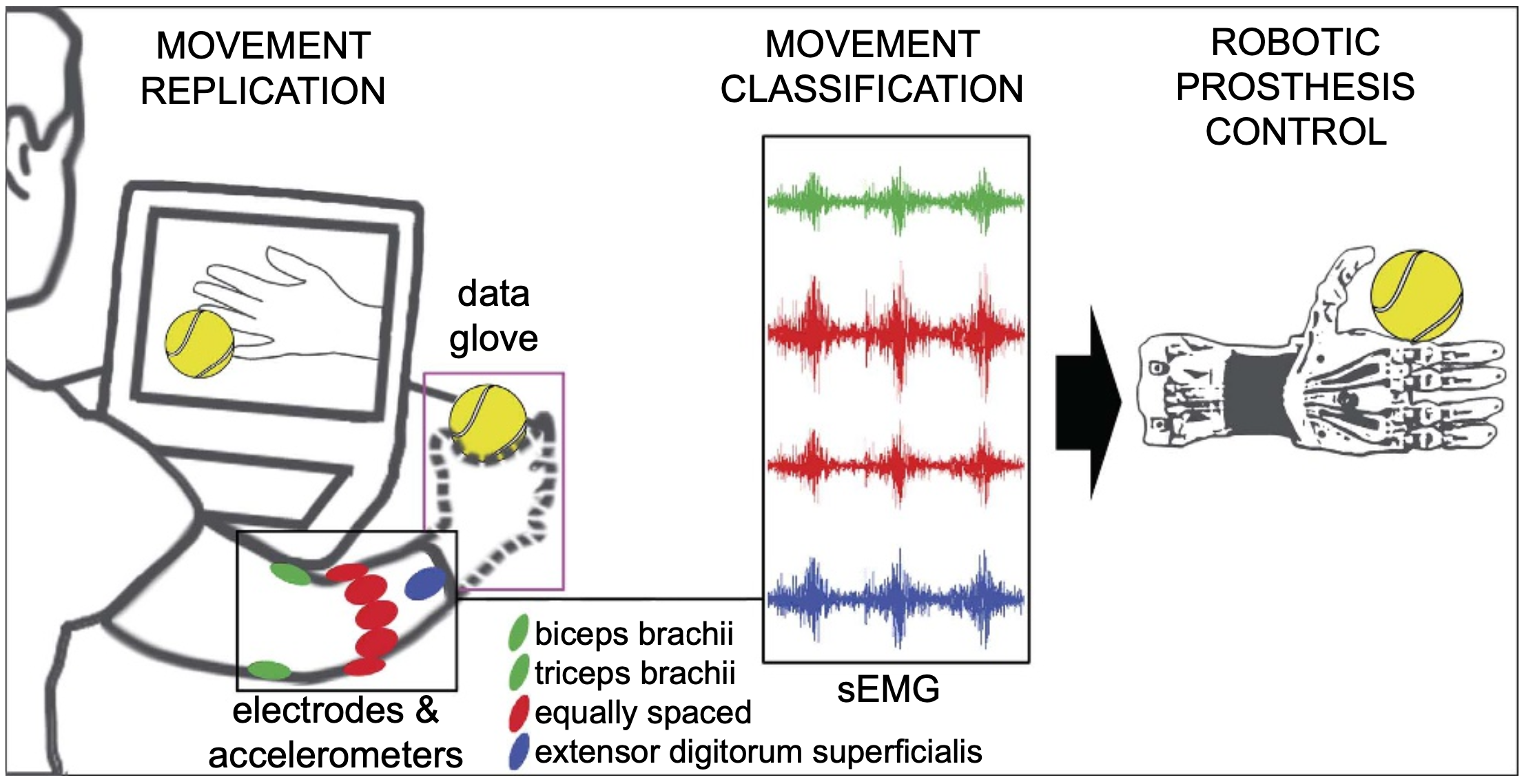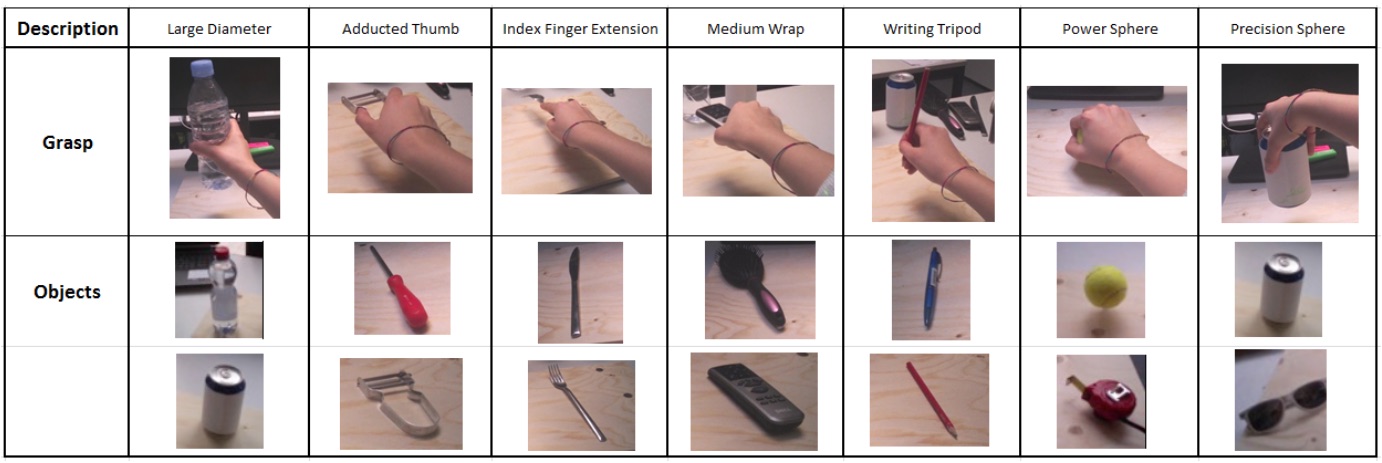DB6 Guidelines
Overview
The main goal of this dataset is to help the scientific community in
studying repeatibility of sEMG classification of hand grasps.
Publications
The dataset is described in detail in the following scientific paper.
Please, refer to it for detailed guidelines and cite it in case you use
this dataset.
Instructions
Subjects
10 intact subjects.
Acquisition Setup
DELL Latitude E5520: the laptop used to perform the data acquisitions
and to record the data.
Tobii Pro Glasses II: a wearable eye tracking system used to record the
eye movements and field of view.
14 Delsys Trigno double differential sEMG Wireless electrodes: used to
record the muscular activity of the forearm.
The electrodes are equally space around the forearm. The first eight
at the height of the radio humeral joint, the remaining 6 below. The
electrodes were fixed on the forearm using their standard adhesive
bands. Moreover, a hypoallergenic elastic latex free band was placed
around the electrodes to keep them fixed during the acquisition. The
sEMG signals are sampled at a rate of 2 kHz.
Acquisition Protocol
The data are recorded from 10 intact subjects repeating 7 grasps 12 times,
twice a day for 5 days.
The names are coded as follows:myoelectric and inertial measurements
"S1_D1_T1.mat"
Subject: 1
Day: 1
Time of the day: 1 (morning, while 2 is afternoon)
The acquisition protocol is an evolution of the acquisition protocol used
to record the previous Ninapro datasets. The researcher explains the
experiment to the subject, asks him to respond to a few questions
(including age, gender, height, weight and laterality) and measures the
length (wrist to elbow) and circumference of the subject forearm. Then,
the researcher explains the experiment to the subject. The subject sits in
front of a table with the forearm leaning on it. The experiment consists
of 12 repetitions of 7 grasps performed on a set of 14 objects. The set of
hand grasps (figure below) was chosen from the robotics and rehabilitation
literature with the goal of covering several hand movements exploited in
activities of daily living (ADL). The grasp to be performed is shown to
the subject with two videos (in first and third person perspective).
Afterwards, a set of audio commands explains the subject the task to be
performed (i.e. grasping the object, releasing the object and returning to
the rest position). While performing the experiment, a fixed image
representing the grasp is shown on the screen of the laptop. The number of
repetitions is equally distributed among two objects. Each repetition
lasts for 4 seconds and is followed by 4 seconds of rest. The data
recorded from each subject are uploaded to Ninaweb and publicly available
as the 6th Ninapro dataset 3 .
Dataset variables
For each exercise, for each subject, the database contains one matlab file
with synchronized variables. The variables included in the matlab files
are:
- subj: subject number
-
acc (48 columns): three-axes accelerometers of the 12 electrodes (6
columns are empty)
-
emg (16 columns): sEMG signal of the 14 electrodes (2 columns are
empty)
- stimulus (1 column): the movement repeated by the subject.
-
restimulus (1 column): again the movement repeated by the subject. In
this case the duration of the movement label is refined a-posteriori
in order to correspond to the real movement
- object (1 column): used object.
- reobject (1 column): relabeled used object.
- repetition (1 column): repetition of the stimulus
- rerepetition (1 column): repetition of restimulus
- repetition object (1 column): used object repetition
- daytesting: day of the acquisition (1 to 5)
- time: time of the acquisition (1 to 2)

Acquisition procedure. The subjects are asked to mimic movies of movement
shown on the screen of the laptop. sEMG signal is recorded with 10
electrodes (red, blue; the electrode on the flexor digitorum superficialis
and part of the equally spaced electrodes are not represented due to
perspective reasons).

Hand movements.

